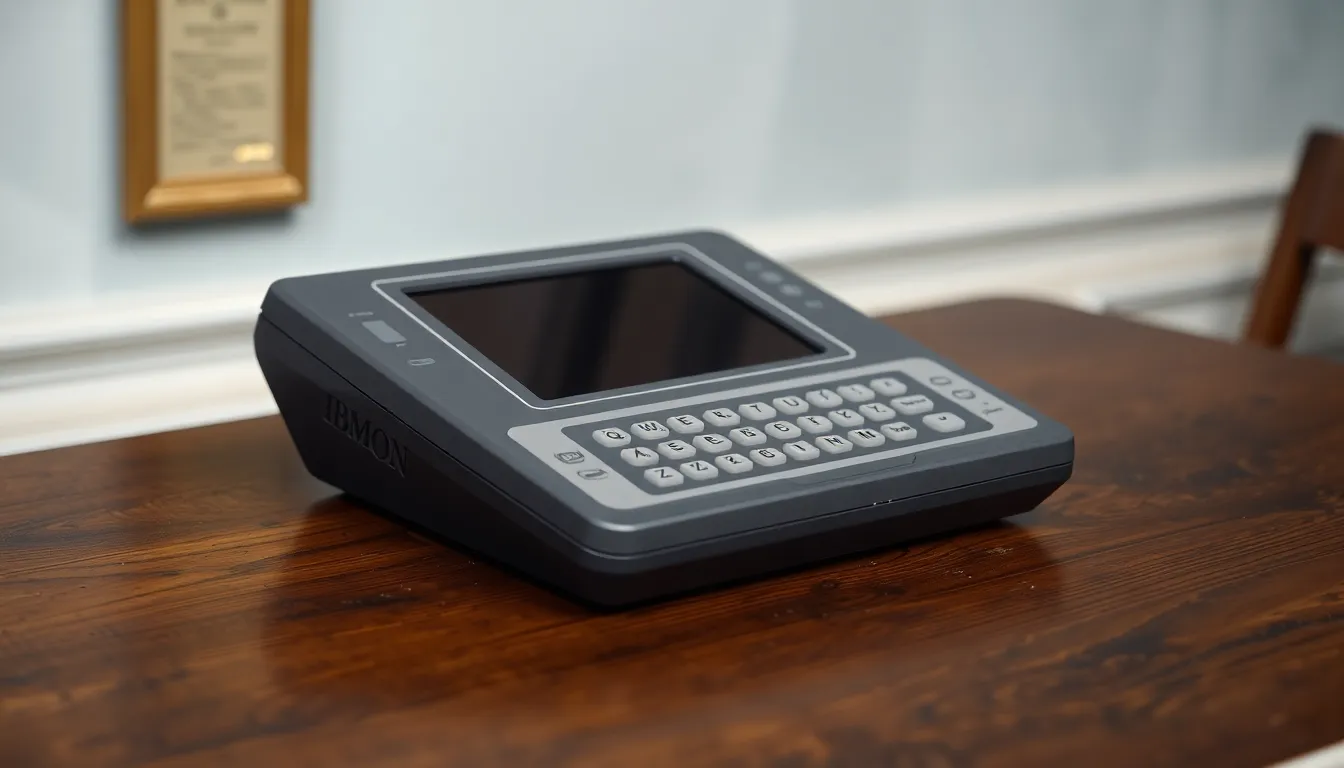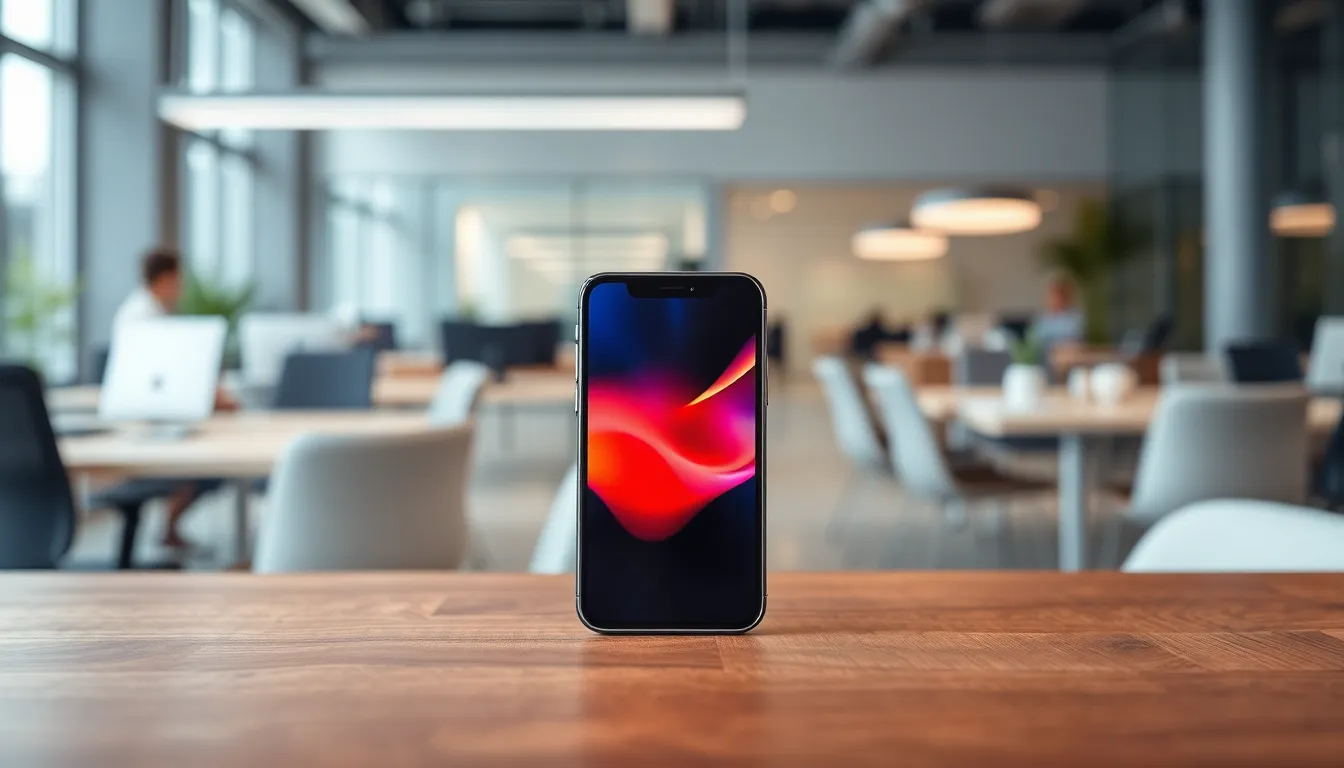When the iPhone burst onto the scene in 2007, it felt like the tech world had just experienced a seismic shift. With its sleek design and intuitive touchscreen, it had everyone wondering if this was the dawn of a new era. But was it really the first touchscreen phone? Spoiler alert: the answer’s a bit more complicated than a simple yes or no.
Table of Contents
ToggleWas The iPhone The First Touchscreen Phone?
The iPhone, released in 2007, is often credited with popularizing touchscreen technology in smartphones. However, it wasn’t the first device to feature a touchscreen. Numerous phones with touch interfaces appeared well before the iPhone’s debut.
In 1992, IBM introduced the Simon Personal Communicator, recognized as the first smartphone with a touchscreen. This device had a monochrome LCD screen and could use stylus input for navigation. Moreover, devices like the Palm Treo series and the HTC Touch also featured touchscreens prior to the iPhone.
While the iPhone’s interface represented a groundbreaking evolution of touchscreen technology, it built upon existing concepts. The iPhone utilizes capacitive touchscreen technology, which is more responsive than the resistive touchscreens common in earlier devices. Capacitive screens allow for multi-touch gestures, providing users with a more intuitive experience.
Apple’s marketing emphasized seamless interaction with a sleek design. Although the iPhone stands out for its user-friendly interface and its integration of applications, it didn’t originate the idea of touchscreens. Understanding this context clarifies the iPhone’s role in the broader history of mobile technology.
Several other manufacturers contributed to the development of touchscreen devices, paving the way for the iPhone. Their innovations highlighted potential and set the foundational standards for touchscreen smartphones. This history underscores that while the iPhone transformed the market, it entered a field where touch technology was already evolving.
Historical Background of Touchscreen Technology

Touchscreen technology has evolved significantly over the years, influencing the design and functionality of mobile devices. Key innovations set the stage for later developments.
Early Touchscreen Innovations
Touchscreen technology dates back to the 1960s with the work of pioneers like E.A. Johnson, who developed the first capacitive touchscreen. Various systems appeared throughout the 1970s and 1980s, such as the original Simon Personal Communicator, which used a monochrome LCD and offered basic touch capabilities. Devices like the GRiD Pad followed, further refining the technology. These early touchscreens primarily used resistive technology, requiring pressure to register input. As manufacturers tested different styles, they laid the groundwork for user interfaces that would become commonplace.
Evolution of Smartphones
Smartphones began to take shape in the 1990s, integrating touch technology into more portable devices. The IBM Simon launched in 1992, marking the first smartphone with a touchscreen, allowing users to dial contacts and send faxes. Following this, the Palm Treo series introduced QWERTY keyboards with touch-based navigation. Capacitive touchscreens gained traction in the mid-2000s, leading to innovations like the HTC Touch. By 2007, the iPhone emerged, combining these elements into a cohesive and user-friendly interface, revolutionizing the smartphone industry and further popularizing touch technology.
The iPhone and Its Impact
The iPhone transformed the smartphone landscape with its innovative features and design. This device not only showcased touchscreen capabilities but also redefined user interaction.
Features That Defined a New Era
Touch-responsive gestures defined user experience in the iPhone. Multi-touch technology enabled users to pinch, swipe, and tap on the screen, promoting natural navigation. The seamless integration of hardware and software set a new standard for smartphones. High-resolution displays enhanced visual clarity, making content more engaging. Features like the App Store expanded functionality, giving users access to thousands of applications and fostering a vibrant ecosystem. Accessibility and user-friendliness became priorities, with a focus on intuitive interfaces appealing to a wide range of consumers.
Comparison With Predecessor Devices
Predecessor devices lacked the iPhone’s level of sophistication. While earlier smartphones had touchscreens, they relied on styluses or resisted touch, reducing ease of use. The IBM Simon offered basic functionality, yet lacked a refined user interface. The Palm Treo series combined keyboard and touchscreen but didn’t integrate intuitive gestures. HTC Touch demonstrated touch capabilities but fell short compared to the iPhone’s fluid experience. These comparisons highlight the iPhone’s pioneering role and its significant advancements in mobile technology, bringing touchscreens into the mainstream.
Misconceptions Surrounding Touchscreen Phones
Misconceptions about touchscreen phones often emerge due to the iPhone’s groundbreaking influence. Many people mistakenly believe the iPhone was the first touchscreen phone. However, devices like the IBM Simon, introduced in 1992, were pioneers in touchscreen technology. Clarifying this misconception is crucial for understanding the evolution of mobile devices.
Common Myths Debunked
Numerous myths circulate regarding the origins of touchscreen technology. Many assume touchscreen phones only became popular after the iPhone’s release in 2007, yet earlier devices featured functional touchscreens. The Palm Treo and HTC Touch, for example, incorporated touchscreen technology before the iPhone entered the market. Some believe touchscreen devices lacked usability prior to the iPhone, but many earlier models offered user-friendly interfaces.
Clarifying the Timeline of Touchscreen Phones
The timeline of touchscreen phones reveals a rich history preceding the iPhone. In the 1960s, E.A. Johnson developed the first capacitive touchscreen, marking a milestone in the technology’s evolution. By the 1990s, smartphones equipped with touch capabilities emerged, paving the way for future innovations. Devices such as the GRiD Pad demonstrated early applications of touch technology. With the iPhone’s launch in 2007, touchscreen interfaces gained widespread acceptance, leading to a revolution in mobile technology.
The iPhone undeniably transformed the smartphone landscape with its innovative touchscreen technology and user-friendly design. While it wasn’t the first touchscreen phone, its impact on the market was profound. By popularizing capacitive touchscreens and multi-touch gestures, it set new standards for user interaction.
Devices before the iPhone laid the groundwork for touchscreen functionality, but the iPhone’s cohesive integration of hardware and software brought this technology into the mainstream. Understanding its place in the timeline of touchscreen phones highlights the iPhone’s role as a catalyst for change rather than the originator. The legacy of the iPhone continues to influence smartphone design and functionality today.



